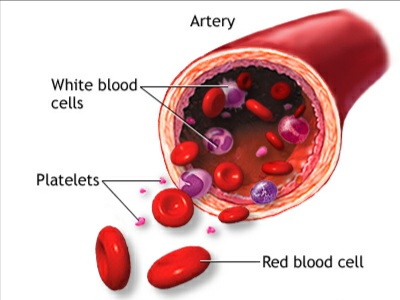MCQ ON FORMED ELEMENTS class 11 for NEET | FORMED ELEMENTS class 11| MCQ FORMED ELEMENTS with Answer | Check the below NCERT MCQ question for class 11Biology based on the with Answers.
MCQ on FORMED ELEMENTS class 11Biology with answers were prepared based on the latest pattern.We have provided class 11 Biology MCQs question with Answers to help students understand the concept very well.
MCQ ON FORMED ELEMENTS is useful for NEET / CSIR / UGC / CBSE / ICSE / AIIMS / EXAM / AFMC EXAM / STATE LEVEL MEDICAL EXAM/ KVS PGT BIOLOGY / NVS PGT BIOLOGY EXAM 2023-2024 ,2025

MCQ ON FORMED ELEMENTS class 11 for NEET
INTRODUCTION:-
FORMED ELEMENTS :-
Erythrocytes, leucocytes, and platelets are collectively called formed elements and constitute nearly 45 percentage of blood.
Red blood cells are the most
abudants of all the cells in blood. A healthy adults man has on an average 5 millions to 5.5 millions of RBCs m/m 3 of blood.
RBC are formed in the red bone marrow in the adults. RBCs are devoid of nucleus in most of the mammals and are biconcave in shape.
They have a red colour iron containing complex protein called hemoglobin hence colour and name of these cells. A healthy individual has 12-16 gms of haemoglobin in every 100 ml of blood.
These molecules play a significant role in transport of respiratory gases.
RBC have an average life span of 120 days after which they are destroyed in the spleen graveyard of RBCs.
LEUCOCYTES:- Leucocytes are known as white blood cells as they are colourless due to lack of hemoglobin.
They are nucleated and are relatively lesson number which average 6000-8000 m/ m 3 of blood.
Leucocytes are generally short lived.We have two main categories granulocytes and agranulocytes.
PLATELETS also called thrombocytes are cell fragments produced from megakaryocyte.It helps in clotting of blood.
DISORDERS OF CIRCULATORY SYSTEM:-
HIGH BLOOD PRESSURES’-
Hypertension is the term for blood pressure that is higher than 120 by 80 in this measurement 120 millimetre Hg millimetres of Mercury pressure is the systolic pressure or pumping pressure and 80 mm mercury is the diastolic or resting pressure.
If repeated checks of blood pressure of an individual is 140 by 90 or 140 over 90 or higher its shows hypertension. High blood pressure leads to heart diseases and also affects vital organs like brain and kidney.
.
CORONARY ARTERY DISEASE (CAD):-
Coronary artery disease often referred to as atherosclerosis , affects the vessel that supply blood to the heart muscle.
It is caused by deposits of calcium , fats , cholesterol and fibrous tissues which makes the lumen of arteries narrower.
ANGINA:-
It is also called eangina pictorist. A symptom of acute chest pain appears when no oxygen is reaching the heart muscle.
Angina can occur in men and women of any age but it is more common among the middle aged and elderly.
It across due to conditions that affect the blood flow.
MCQ FORMED ELEMENTS class 11 for NEET/KVS PGT BIOLOGY / NVS PGT BIOLOGY EXAM 2023-2024,2025
1. Erythrocytes , leucocytes and platelets are collectively called
(a) formed elements
(b) plasma
(c) blood groups
(d) thrombocytes
Ans (a) formed elements
2. Most abundant of all the cells in blood
(a) RBC
(b) WBC
(c) plasma
(d) thrombocytes
Ans. (a) RBC
3. RBCs are formed in the……………..in adults
(a) red bone marrow
(b) yellow bone marrow
(c) lymph
(d) thrombocytes
Ans. (a) red bone marrow
4. RBCs are devoid of nucleus in the most of mammals and are ………….in shape.
(a) convex
(b) biconcave
(c) cylindrical
(d) circular
Ans.(b) biconcave
5. A healthy individual has …………….gram of haemoglobin in every 100 ml of blood.
(a) 10 – 20 gms
(b) 12 – 16 gms
(c) 10 – 25 gms
(d) all the above
Ans.(b) 12 – 16 gms
6. RBCs have an average life span of ……………..days
(a) 140
(b) 120
(c) 130
(d) 150
Ans.(b) 120 days
7. Graveyard of RBCs
(a) spleen
(b) thrombocytes
(c) platelets
(d) lymph nodes
Ans.(a) spleen
8.Components of blood play a significant role in transport of respiratory gases.
(a) RBCs
(b) WBCs
(c) platelets
(d) all the above
Ans.(a) RBCs
9. WBCs are colourless due to
(a) lack of hemoglobin
(b) lack of oxygen
(c) lack of protein
(d) all the above
Ans. (a) lack of hemoglobin
10. Which are granulocytes ?
(a) neutrophils
(b) eosinophils
(c) basophils
(d) all the above
Ans. (d) all the above
11. Which are agranulocytes ?
(a) lymphocytes
(b) monocytes
(c)both
(d) basophils
Ans.(c) both a and b
12. Which are most abudants cells of the total WBCs ?
a) neutrophils
b) basophils
c) monocytes
(d) lymphocytes
Ans . (a) neutrophils
13. Which are phagocytic cells which destroy foreign organisms entering the body?
(a) Neutrophils and Monocytes
(b) Basophils and Monocytes
(c) lymphocytes and Monocytes
(d) all the above
Ans.(a) Neutrophils and Monocytes
14. Which secrets histamine, serotonin, heparin are involved in inflammatory reaction.
(a) Basophils
(b) Monocytes
(c) Eosinophils
(d) all the above
Ans. (a) Basophils
ALSO READ:-
● YOU CAN WATCH BIOLOGY SIR Youtube channel
15. Which is associated with allergic reaction?
(a) monocytes
(b) lymphocytes
(c) thrombocytes
(d) eosinophils
Ans.(d) eosinophils
16. Platelets are also called
(a) thrombocytes
(b) graveyard of cells
(c) plasmt
(d) all the above
Ans.(a) thrombocytes







Leave a Comment